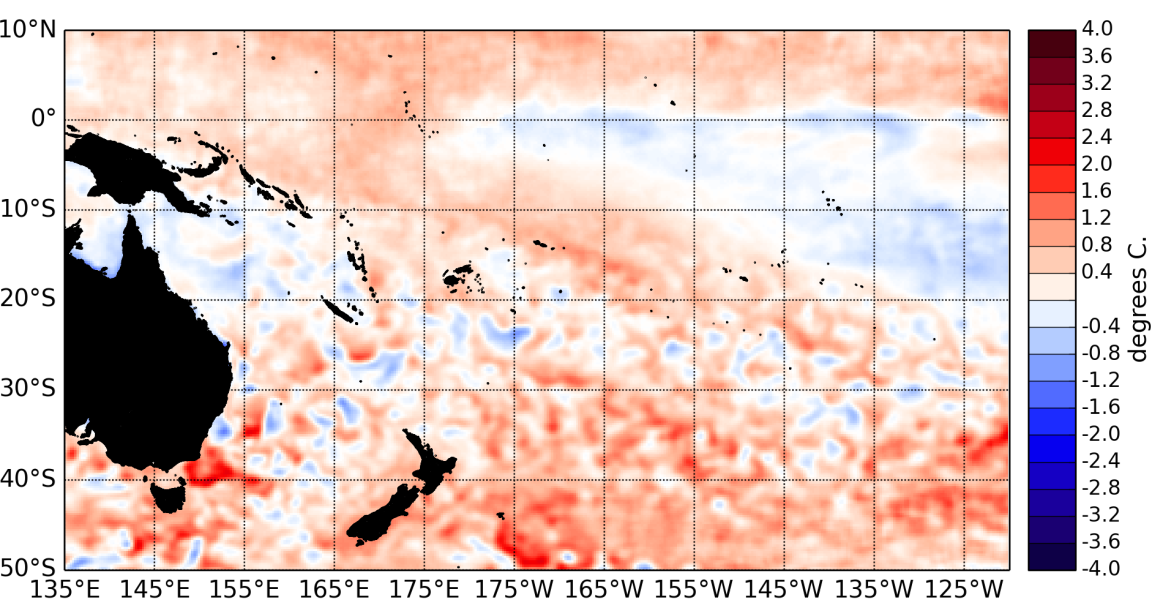The equatorial Pacific Ocean remains ENSO-neutral at the end of July 2014, with atmospheric and oceanic conditions failing to sufficiently couple and thereby initiate an El Niño event.
Equatorial sea surface temperatures (SSTs) have eased back to below the +0.5°C El Niño threshold in the NINO3.4 region, while SST anomalies remain elevated in the western Pacific. Further, the very large sub-surface temperature anomalies present in the eastern Pacific in June have now all but disappeared. Thus, the chances of an El Niño event developing over spring appear to be lessening.
The latest monthly anomaly values for the NINO SST indices are: 0.24°C for NINO3.4, 0.74°C for NINO3, and 0.39°C for NINO4, all down from June 2014.
The Southern Oscillation Index (SOI) is at –0.3 for July 2014 (neutral), and the latest value for the TRMM ENSO index for the 30 days to 6 August is 0.78 (in the weak El Niño range).
The Intertropical Convergence Zone (ITCZ) was much more intense than normal in July. The South Pacific Convergence Zone (SPCZ) was weaker than normal and shifted to the north of its climatological position in the western Pacific.
As was the case in June, a large region of the south Pacific (from the southern parts of the Solomon Islands to east of Samoa, as well as parts of French Polynesia) experienced anomalously low rainfall in July 2014.
The Madden – Julian Oscillation (MJO) was inactive over the Pacific in the last two weeks of July. The forecasts (CPC) indicate normal or reduced levels of intra-seasonal convective activity over the next two weeks.
Despite the weakening of the SST and ocean subsurface signals, the consensus forecast from the IRI / CPC continues to indicate that El Niño is the most likely outcome (70 % chance) over the August to October 2014 period.

